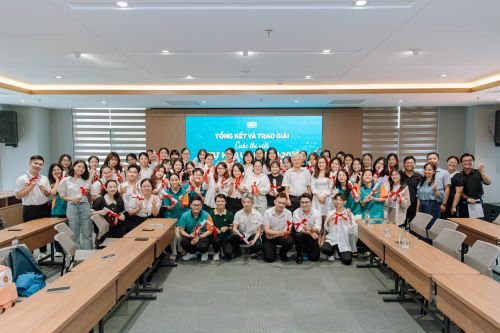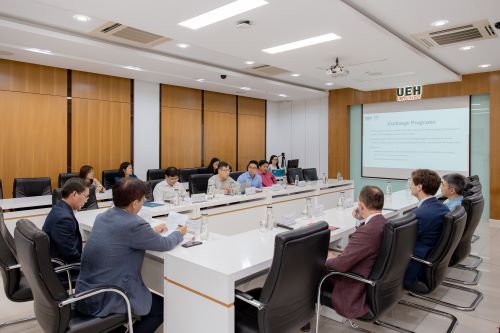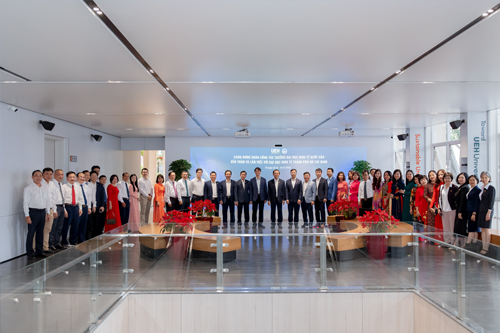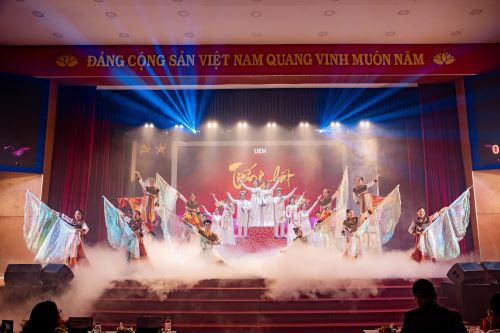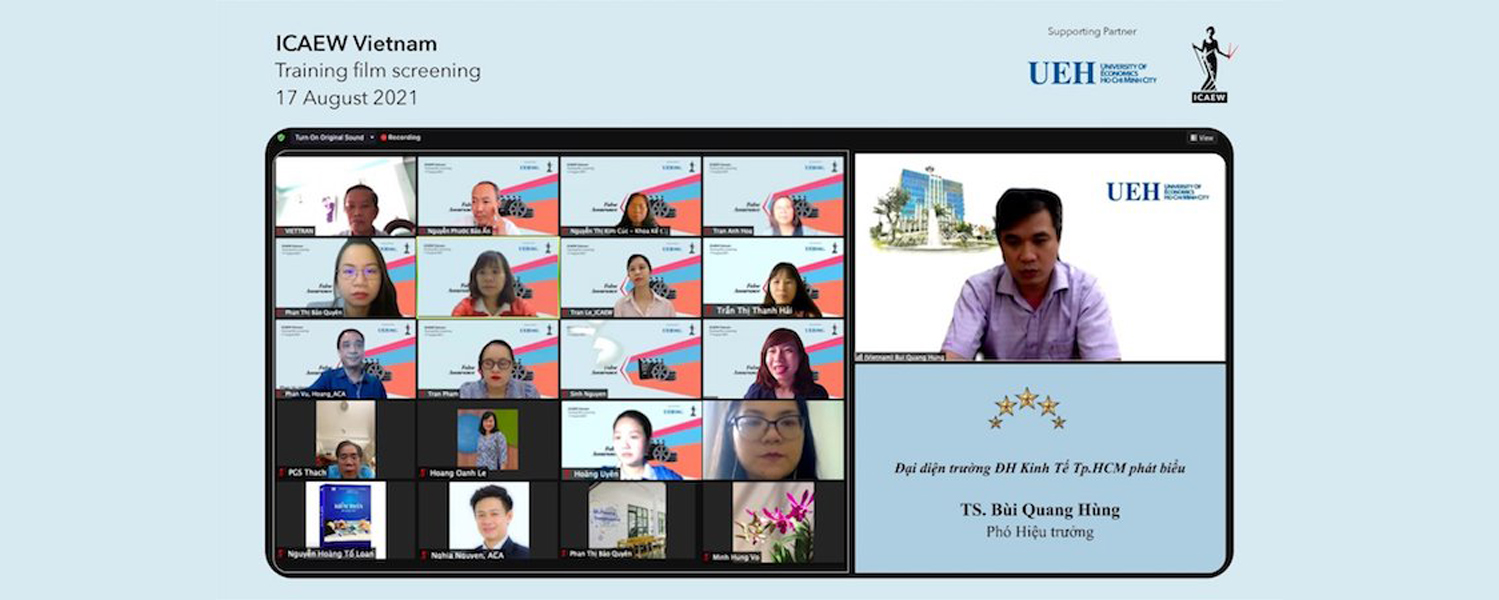
Applying Film-Type Case Studies in Teaching to form Problem-Solving Capabilities for UEH Students
Critical thinking forms when people have a need to understand certain problems. It often starts with an issue or question, from amazement to genuine curiosity. Individual interests are peaked thanks to a realistic occurrence in their own lives. When films and motion pictures are used in education, it is considered an exciting introduction to new concepts, ideas or books, a creative method and “out of the box” approach, as opposed to the traditional modes of teaching and learning. Film-type case studies can help facilitate critical reflection and skepticism; therefore, this method is believed to be an active teaching method that is conducive to the achievement of comprehensive education goals calling on in-depth investment towards innovative teaching methods in today’s day and age. Such method is effective in bringing about joy, excitement and passion in students in terms of knowledge acquisition, critical thinking exploration and problem-solving capabilities, which in turn, can and will produce a force of independent, creative and problem-solvers of the world.
Establishing problem-solving capabilities in students through films
According to John Dewey, goal setting is a complex activity, including (1) observation under defined context conditions; (2) A collection of knowledge about what happened in a similar context in the past. Knowledge acquired partly through aggregation and partly from the information, advice and warnings of experienced predecessors; (3) Judgment, which is a combination of what has been observed in the same context and what will appear when observing the phenomenon.
Thus, the film-type case study is an effective tool to help students formulate goals, stimulate learning motivation, and at the same time promote activities and interactions between students, teachers, and the context of the film. The overall circumstances of the film then are determined to meet learning goals while providing information to learners through images and sounds as they can observe phenomena in a defined context.
Associating acquired knowledge and personal experience will better facilities motivation, encouraging students to analyze interactions and make accurate predictions. The ultimate learning outcome are newly developed capabilities, namely problem-solving skills. This process is a deliberate cycle and can be extended based on the context of the film as it is established based on pre-determined learning objectives.
There are numerous studies conducted that show learners can better acquire knowledge through the use of visualization and multimedia methods than through the traditional “chalk and talk” method. Hakkâri and colleagues (2008) confirmed that learners can focus on a lecture for, at most, 16-20 minutes in an hour; therefore, the use of film cases is of considerable importance to really captivate attention in an extended period of time. According to Hartley and Davies (1978), with the traditional direct oral instruction, university learners can remember 70% of what was taught in the first 10 minutes and only 20% of what was taught in the remaining hour(s). Demirel and colleagues (2008) also studied sensory retention rates and concluded that people remember 50% of what they see and hear and 80% of what they see, hear and say.
Kabadayi, L. (2012) conducted a survey on students' opinions on the role of film-type case studies in higher education. The findings (Figure 2) clearly supported the use of film-type case studies to be implemented in the classroom.
Positive benefits of using film-type case studies in the classroom
Film-type case studies help improve memory and comprehension skills, enable learners to retain the materials easier while becoming more expressive through the diligent support of creative thinking. The film was made short and succinct, with primary focus on the targeted topic, which gradually helps learners develop the habit of visual thinking to facilitate quicker knowledge acquisition. As a result, the need to recall previous lectures in class will progressively become obsolete while further strengthening retention. Additionally, the students will also develop more perceptive observation skills through active participation, more refined assessment of human relationships, and clearer understanding of the interactions between individuals and the society. On top of that, students will be given plenty of opportunities to partake in group work and learn to take accountability for their own actions, as well as team achievements. What’s more, the case studies presented in the short-film are carefully curated to promote critical thinking and direct relevance to previously-taught materials.
Film case studies and UEH
Recognizing the benefits of incorporating film case studies in the classroom in shaping the skills of global citizens, the School of Accounting, University of Economics Ho Chi Minh City has cooperated with the Institute Chartered Accountants in England and Wales (ICAEW) to organize training and officially put the ICAEW False Assurance short film into teaching.
Dr. Bui Quang Hung - Vice President of UEH shared: “I am convinced that such type of film-type case studies isn’t just restricted to one class but can actually be applicable across different situations and disciplines. The use of appropriately-designed film-type case studies in the classroom will help UEH enhance the practicality as well as global integration of our academic curriculum, ensuring that our students’ learning experience is as effective as possible.”

Dr. Bui Quang Hung - Vice President of UEH delivering his opening keynote
Right after the training, many lectures of the School of Accounting have moved to use the film in their classes in the new semester. When surveyed on the effectiveness of this method as opposed to the traditional model, the students were expressively excited. Nguyen Ngoc Tuong An, KNC02 of Class of K45, full-time program shared: “Incorporating film-type case studies into the classroom definitely makes the sessions more fun, which makes it so much easier to understand the lectures. It’s also helpful that we are able to participate in vigorous group work and discussions instead of just listening to the professors.” Another student, Tran Gia Bao, KNC01 of Class of K45, full-time program, also agreed, “This new teaching and learning method certainly makes it easier for me to not only understand the materials but also be able to apply the theories more effectively in practice.”

UEH Lecturer Nguyen Phuoc Bao An used film case False Assurance
At the moment, when online training is still a necessity, it is even more fitting to implement film-type case studies in teaching, such as ICAEW False Assurance, especially in blended or flipped classes. Teachers can easily apply the principles of lesson design to ensure proper combination, granularity, reusability and interoperability. Simultaneously, learners will be more incentivized to arrange their study time while have more freedom for creativity, and thereby, develop their problem-solving capabilities and accomplish their academic goals.
News & Photos: School of Accounting, Department of Marketing and Communication, Department of Research Management – International Cooperation

![[Podcast] Social policy response towards the COVID-19 pandemic in some countries (Part 2): Lessons for Vietnam](/images/upload/thumbnail/ueh-thumbnail-031128-122823.png)
